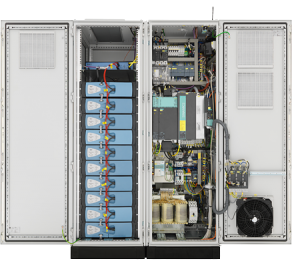On 20th July 2015 a group of small home storage systems for solar energy have been prequalified by TenneT TSO GmbH in coordination with all 4 German TSO to support the primary energy regulation for the grid stability. 65 energy storage systems (ESS) of the pilot project SWARM are therefore allowed to be part of the grid stability network in Germany.

As the Nurnberg based utility N-ERGIE AG has published in a press release, the SWARM project was a joint venture between the system developer Caterva GmbH and the N-ERGIE supported by the free state of Bavaria. Technology partner is the Siemens AG.
The unique point of this virtual storage is the connection of a grid of household sized battery units. These ESS are based on lithium-ion accumulators from the company Saft Batterien GmbH, the electronic component s are supplied by Siemens.
Each EES has its own controlling unit which reacts on the grid frequency. With an UMTS module all household storage systems are connected with the central dispatching of Caterva and can be coordinated as a swarm. The central dispatching records the storage level of each unit and regulated the swarm in such a way, that at any time the minimum capacity for the primary energy regulation is available. Recorded data will be transferred online to the central dispatching of TenneT. The power plant dispatching of N-ERGIE is monitoring the status of the virtual storage system 24/7 similar with a power plant.
“This virtual storage system is a symbol of an intelligent and consequently decentralized solution of the challenges we are facing in the energy turnaround” points out Mr. Josef Hasler the CEO of N-ERGIE.
Each household has an ESS with a total capacity of 20 kilowatt and a production capacity of 21 kilowatt hours. These household do have mostly solar panels and are able to cover 60 to 80 percent of the electricity consumption with the electric storage system. In addition these EES are supporting the grid stability.
The first 65 ESS are distributed of the total more than 8.000 square kilometer wide distribution area of N-ERGIE.



